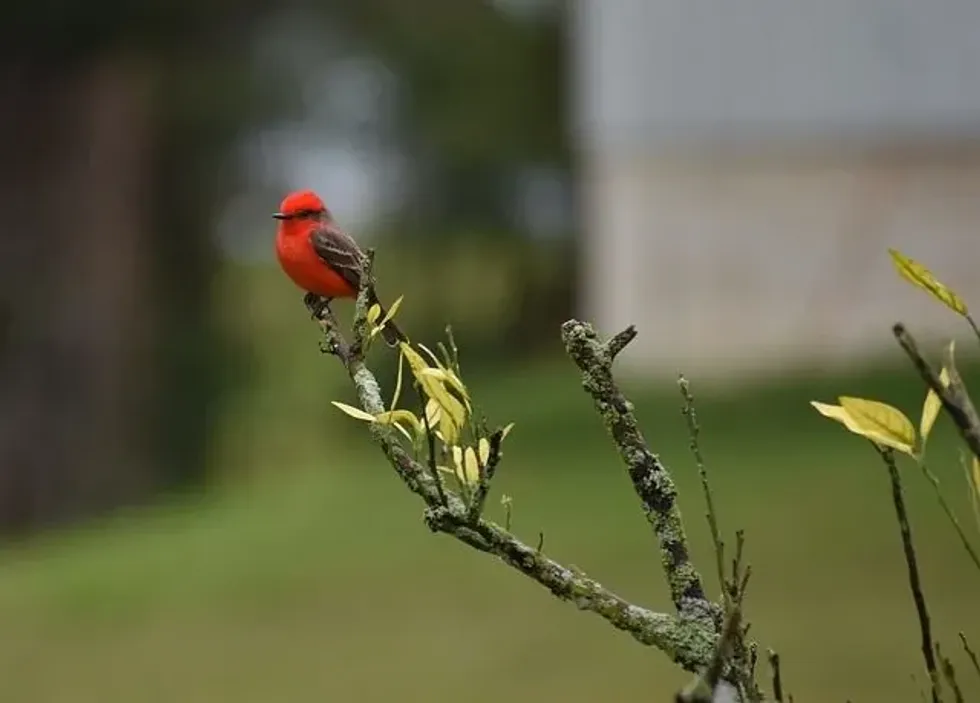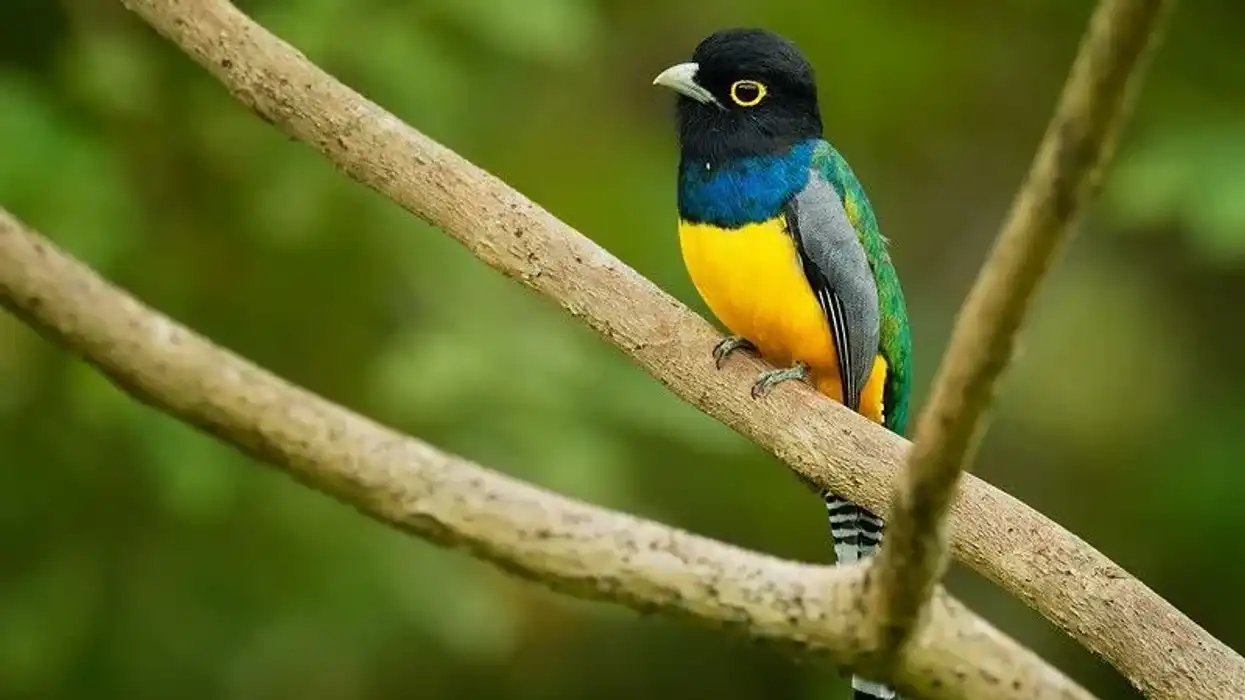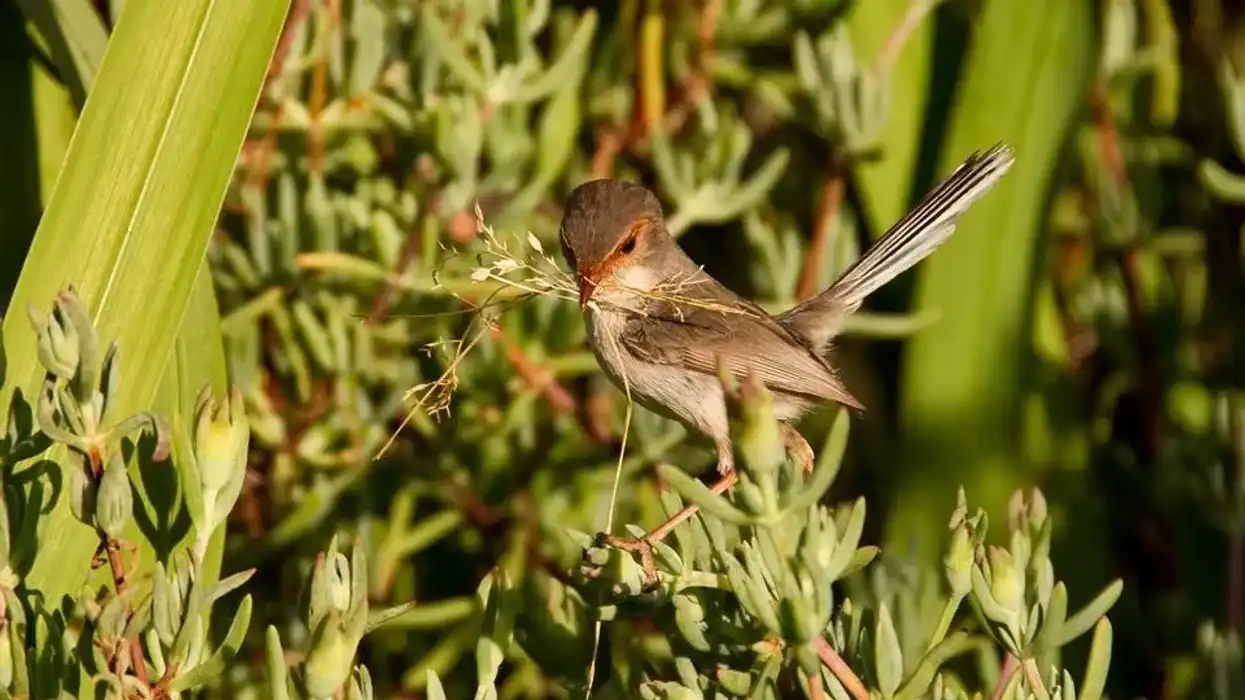Vermilion flycatchers are adorable little birds that are a treat to look at in the wild. They are easily one of the favorites of wildlife photographers and bird watchers alike.
Vermilion flycatchers are from the 'tyrant flycatcher' family, with the scientific name Pyrocephalus obscurus. They are cute and appealing and have a unique color combination.
They prefer living in areas near water such as savannas, scrubs, agricultural areas, riparian woodlands, and deserts. They are generally located in North America and South America. Vermilion flycatchers are 5.1–5.5 in (13–14 cm) long and weigh around 0.39-0.49 oz (11-14 g).
They are medium-sized birds with wings and tails of a brown color and a reddish-orange body for males and blackish-brown with a white patch on their stomach for females. They make their own nest that is loosely constructed on the top of trees.
If you enjoy these vermilion flycatchers facts, do go through our other articles on the great crested flycatcher and the western bluebird too.
Vermilion Flycatcher Interesting Facts
What type of animal is a vermilion flycatcher?
Vermilion flycatchers are attractive birds that sport a bright red coloring.
What class of animal does a vermilion flycatcher belong to?
Vermilion flycatchers belong to the class of Aves. They are South and North American birds usually found in regions from South Texas to northern Chile. There are about 12 different species of this bird.
How many vermilion flycatchers are there in the world?
There are approximately 5 million to 50 million vermilion flycatchers in the world. The majority of their population lives in the North American continent, and their range is spread between south Texas and southern America.
Where does a vermilion flycatcher live?
They mostly live in the North American continent but the vermilion flycatcher range also covers almost all of Mexico, spreading towards Central America and sometimes reaching all the way north up to Canada.
A part of the population resides in South America as well. These North American birds do not migrate, unlike South American flycatchers which migrate during winter to the Amazon.
Their migratory behavior has resulted in the wide distribution of this bird's population all across the Americas and they are capable of migrating up to 4000 miles (2500 km).
What is a vermilion flycatcher's habitat?
The typical vermilion flycatcher habitat is spread across various environments such as the savanna, scrub savanna, any agricultural area, riparian woodland, and even desert as long as there is a suitable water source nearby. Most of their population do not migrate and prefer to live within the same habitat.
But the population in South America tends to migrate to the Amazons during winter. They are found nesting on trees that are 6-20 ft (1.8-6.1 m) off the ground.
Their nests look like a shallow cup which is loosely constructed using twigs, grasses, and mushy material. You can sometimes spot them hunting insects by performing a quick little flight from their perch.
Who do vermilion flycatchers live with?
They are reclusive birds, which means they prefer to live on their own. Some of them travel as flocks during their winter migration.
The vermilion flycatcher bird is considered to be monogamous, but sometimes both the adult male and female do mate with other single vermilions other than their partner. During the day is when these birds are most active, and they sleep as it gets dark.
How long does a vermilion flycatcher live?
The lifespan of this species, on average, is about four to five years in the wild. They have a healthy population across the Americas.
How do they reproduce?
This species is monogamous although, they do sometimes have other mating partners. The adult male vermilion flycatcher executes a series of flight maneuvers to attract the adult female flycatcher.
After the female's approval, the male proceeds to look for nesting sites. The female bird is responsible for creating the nest.
Eggs are laid between March and June. The litter size is, on average, two to four eggs, and one egg is laid per day.
The eggs are mostly white with brown stains and males feed the female while she incubates the eggs for 13-15 days. After the eggs hatch, both parents are responsible for feeding and taking care of the vermilion flycatcher juvenile for 15 days until they are capable of surviving in the wild by themselves.
What is their conservation status?
The conservation status of the vermilion flycatcher (Pyrocephalus rubinus) is Least Concern. These birds have a stable population within their habitat and urbanization of their habitat and the use of pesticides on plants and trees are the only threats this species faces.
Vermilion Flycatcher Fun Facts
What do vermilion flycatchers look like?
The vermilion flycatcher (scientific name: Pyrocephalus obscurus) is a small, beautiful bird. This species of bird is highly dimorphic, meaning the males and the females of this species have a considerable difference in appearance.
Males have a bright red crown, underparts, throat, and a blackish-brown plumage. The red color of the male might vary to be slightly orange sometimes.
Their wings and tail, along with their nape, ears, and the region around their eyes, are all dark brown. Females have dark gray wings, tails, crowns, napes, and ears, with white or peach-colored underparts.
Their wings and tail play an important role as the adult male will try to impress females by displaying their flight abilities during the breeding season.
You can also hear them sing during this time. They grow up to 5.1–5.5 in (13-14 cm) long and weigh around 0.39-0.49 oz (11-14 g).

How cute are they?
With their color and appearance, vermilion flycatchers are one of the cutest, most attractive bird species in the wild. The male has an eye-catching red color, while the female has dark gray feathers with white or pale red underparts.
The adult male vermilion flycatcher can spread its feathers and put up a show in the skies during the breeding season to impress the adult female.
How do they communicate?
They communicate in multiple ways. A vermilion flycatcher call is performed during nest constructions, whilst perching, to warn others during territorial conflicts or at the sight of predators.
Males also have a flight song which they sing as they fly high during the breeding season. This vermilion flycatcher song is usually performed by the birds around Arizona and Texas, starting in February and it stops sometime during July.
How big is a vermilion flycatcher?
These birds are only known to grow up to 5.1–5.5 in (13–14 cm). Vermilion flycatchers are small birds, making the already small sparrows look big. Sparrows are two to three times bigger than vermilions.
How fast can a vermilion flycatcher fly?
The average vermilion flycatcher flying speed has not officially been recorded. Although adult males have been spotted flying high above the canopy, up to 50-60 ft (15-18 m) off the ground when performing their flight display to attract females. They are also capable of making their nest and living in regions that are 9,800 ft (3,000 m) in elevation.
How much does a vermilion flycatcher weigh?
Vermilion flycatchers are medium-sized birds that weigh around 0.39-0.49 oz (11-14 g). They only feed on small flying insects throughout their lives, occasionally hunting grasshoppers and beetles.
What are their male and female names of the species?
They do not have gender-specific names. The male is known simply as a male vermilion flycatcher and the female is known as a female vermilion flycatcher.
This species greatly differs in appearance between the two genders. Both their wings, tails, and feathers are blackish-brown in color, but the male has a dominant reddish body, and the female is dark gray with white underparts.
What would you call a baby vermilion flycatcher?
A baby vermilion flycatcher is simply known as a 'chick'. The female bird lays between two to three eggs, and after they hatch, both parents take care of the little chicks until the chicks are able to fend for themselves.
What do they eat?
Vermilions usually prey on insects such as flies, grasshoppers, and beetles. They sometimes hunt and eat them on the ground but, most of the time, they bring them back into their perch and then consume them. They make quick flights from their perch to catch their prey and get back to eat.
Are they friendly?
Vermilions are highly territorial birds and they are not seen interacting with humans a lot. Their preferred habitat is usually away from human activities. They do not prefer living with their own kind and would rather live a solitary life.
Would they make a good pet?
Vermilion flycatchers do not make a good pet as they flourish better in their wild habitat. They prefer to live in savanna, woodland, and even desert habitats. All they need is a good source of food and water.
Did you know...
It has been observed that the male vermilion flycatcher loses its bright red color if kept in captivity. If you are really into photography and want to get a good close-up shot of these attractive birds, you can try to attract them with food.
They have a flight song and make a nest with the help of twigs, grasses. They catch their prey mid-air and this is why they preys include flying insects.
When a male vermilion flycatcher is young, it resembles an adult female.
Do vermilion flycatchers migrate?
The North American populations of these birds are usually non-migratory. However, the South American population migrates from the south to the north of the continent towards the Amazon. Migration has played an important role in expanding their range.
What does it mean when you see a vermilion flycatcher?
This bird is sometimes called the 'bien viaje' species, which means the 'good luck bird'. If this bird is facing you, it is believed to be a sign of good luck, but if they face away from you, showing you their back or the part with black feathers, it is considered bad luck. How interesting!
Here at Kidadl, we have carefully created lots of interesting family-friendly animal facts for everyone to discover! Learn more about some other birds, including the laughing kookaburra or the dove.
You can even occupy yourself at home by drawing one on our vermilion flycatcher coloring pages.










